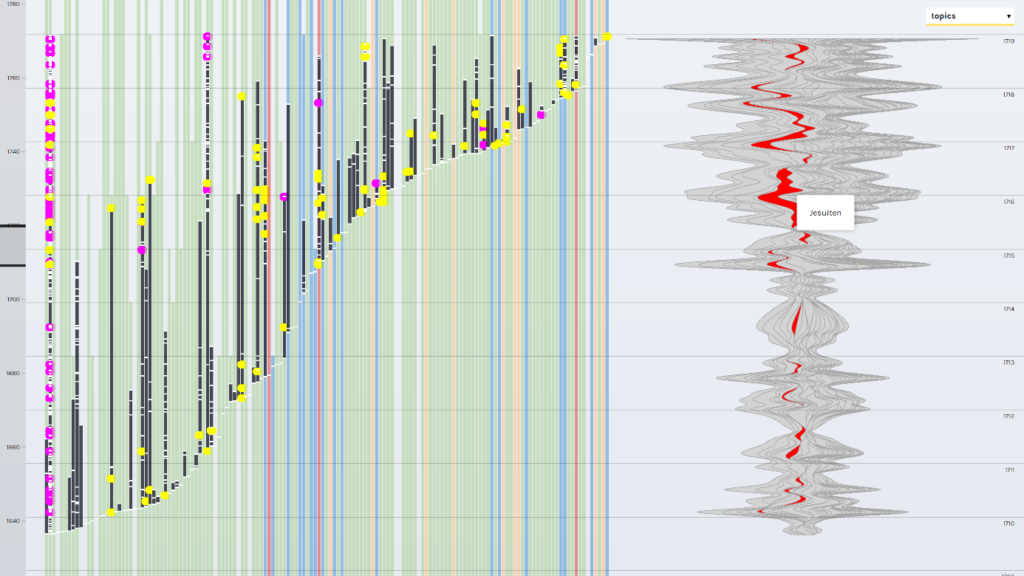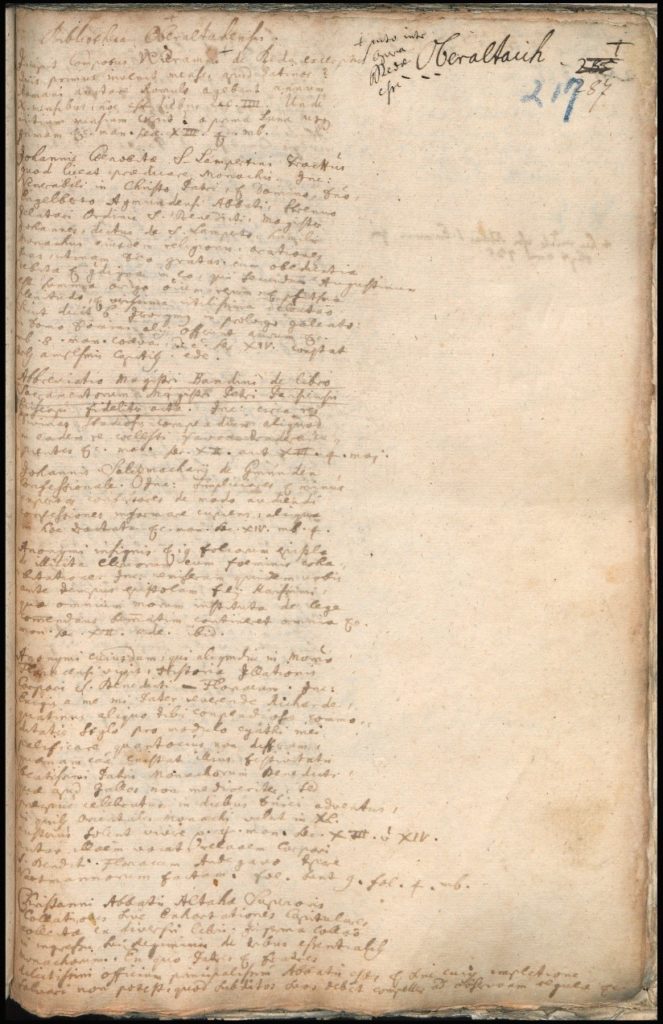Digital Humanities may be fashionable, but they are not a fad. At all times, humanistic thinking has interacted with other forms of scientific epistemology—and sometimes it has even exerted pressure on other fields, like with the historicizing of religion in the Enlightenment. More often, however, the humanities have been forced to defensively safeguard, and try to methodologically underpin, their epistemic standards and claims. Were Wilhelm Dilthey alive today, he might write his Historik in reaction to data science, whose present epistemic eddying can be viewed as similar to that of the natural sciences in late 19th-century Germany.
Humanist scholars engaging with digital methods may thus be advised to formulate their questions before artificial intelligence does it for them. Part of this process is a highly experimental approach to historical source material that is often considered awkward: Quantitative descriptions or visualizations of patterns and trends traceable in a text or a defined series of sources frequently do not follow sound statistical methods, instead merely offering intuitive juxtapositions of coloured chunks. It is precisely this approach that can sometimes lead to new insights, however, as the following paragraphs will attempt to show.
During the past years, the members of the Pez project have set out not only to transform previous scholarly work into machine-readable data, but also to explore the possibilities of data visualization and analysis. Inspired by the “Design sprints” in the context of the COST Action “Reassembling the Republic of Letters”,[1] the Pez group put in several days of intense work with Marco Quaggiotto, an interface design specialist from Milan Politecnico, in September 2017. At the centre of this cooperation were the first ten years of the Pez correspondence, which have already been published in print (see below). The main idea behind the visualization was to relate two parameters: the number of occurrences of selected terms or names of persons in the correspondence during the period under scrutiny, and the exact indication of those occurrences in the individual letters. The former parameter—here: total occurrences of the term “Jesuits”—is depicted in a flow diagram on the right-hand side of the image (proceeding from bottom to top). The latter parameter appears on the left in the shape of a coloured dot for each letter in which the term occurs (with white spots indicating letters in which the term is not mentioned). These dots and spots are placed on vertical bars representing individual correspondents; ideally, the overall length of the bar shows the lifespan of the correspondent, while the black sections indicate the duration of the correspondence with the brothers Pez.

But what does all this have to do with the topic of library visits and journeys? Following a long discussion about the visualization parameters, the group agreed on a reduced colour-coding scheme for the Pez correspondents that is limited to the following categories: green / Benedictine (of any congregation); blue / Catholic, but not Benedictine (thus including lay scholars and members of other religious communities alike); orange / Protestants (of any profession); red / converts to Catholicism (not taking into consideration their dates of conversion, however).
The initial question underlying the visualization was answered rather unsurprisingly: Jesuits became an important topic at the time of the “Cura salutis” controversy in 1715.[2] However, the Pez group was surprised by the accumulation of blue bars—following an exclusive sequence of “green” correspondents—starting in 1712, with continuous new additions through 1717. This shows how the Pez correspondence expanded, after the first three years, from a purely inner-Benedictine network into one reaching out to other Catholic (and eventually, Protestant) scholars.

The point here is that there seems to be a
punctual correlation of this expansion with the library travels undertaken by
the brothers. Each year, starting in 1712 and culminating in their extended
library tour in 1717, the brothers visited local libraries in their
surroundings;[3] before
1712, Bernhard Pez had relied on circular letters to his confrères to reach potential
correspondents. The visualization clearly shows the impact of his changed
strategy—but also to some degree the limited sustainability of these new
contacts, which did not always result in longer correspondences. (Generally
speaking, assessing the relation between itineraries and correspondences can be
a fruitful way to digitally look at the geographic dimension of early modern
intellectual history.[4])
To be sure, these insights will not be followed here
by a thorough analysis of the actual individual correspondences, as that is
what the edition is for; nor does this interpretation claim to consider all the
possible factors leading to the image seen above. What the visualization does
indicate, however, is that library visits can enhance a correspondence network—though
not necessarily in a sustainable fashion—and that data visualizations can often
answer questions that were not even asked at the outset.
[1] See Reassembling the Republic of Letters in the Digital Age. Standards, Systems, Scholarship, eds. Howard Hotson, Thomas Wallnig (Göttingen 2019).
[2] Thomas Wallnig – Thomas Stockinger, Die gelehrte Korrespondenz der Brüder Pez. Text, Regesten, Kommentar, Bd. 1: 1709–1715 (Vienna 2010), 14.
[3] Wallnig – Stockinger, Gelehrte Korrespondenz 1, 5; Thomas Stockinger – Thomas Wallnig – Patrick Fiska – Ines Peper – Manuela Mayer, Die gelehrte Korrespondenz der Brüder Pez. Text, Regesten, Kommentar, Bd. 2: 1709–1716–1718 (Vienna 2010), 12 (partial volumes 1 & 2).
[4] Vladimir Urbanek, Individual Itineraries, in Hotson – Wallnig (eds.), Reassembling the Republic of Letters, 325– 332.
